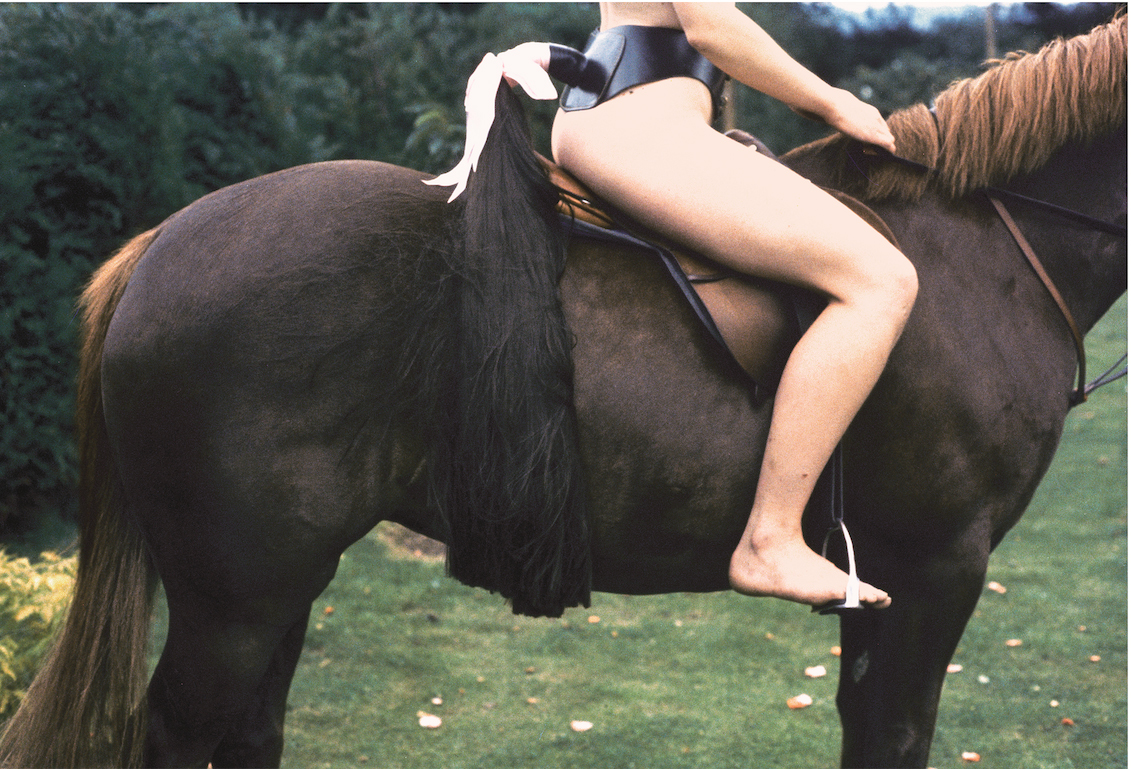
The seven artists selected to show in Bodily Objects share an interest in the experimental mode of representing the idea of “embodiment.” For Helena Almeida, Rose English, Renate Bertlmann, Helen Chadwick, Judy Chicago, Alexis Hunter and Carolee Schneemann; sexuality is something to be subverted. Through means that vary from dressage as metaphor to surreal depictions of glistening meat, they substitute straightforward presentations of the female body for objects, creatures, flowers and food.
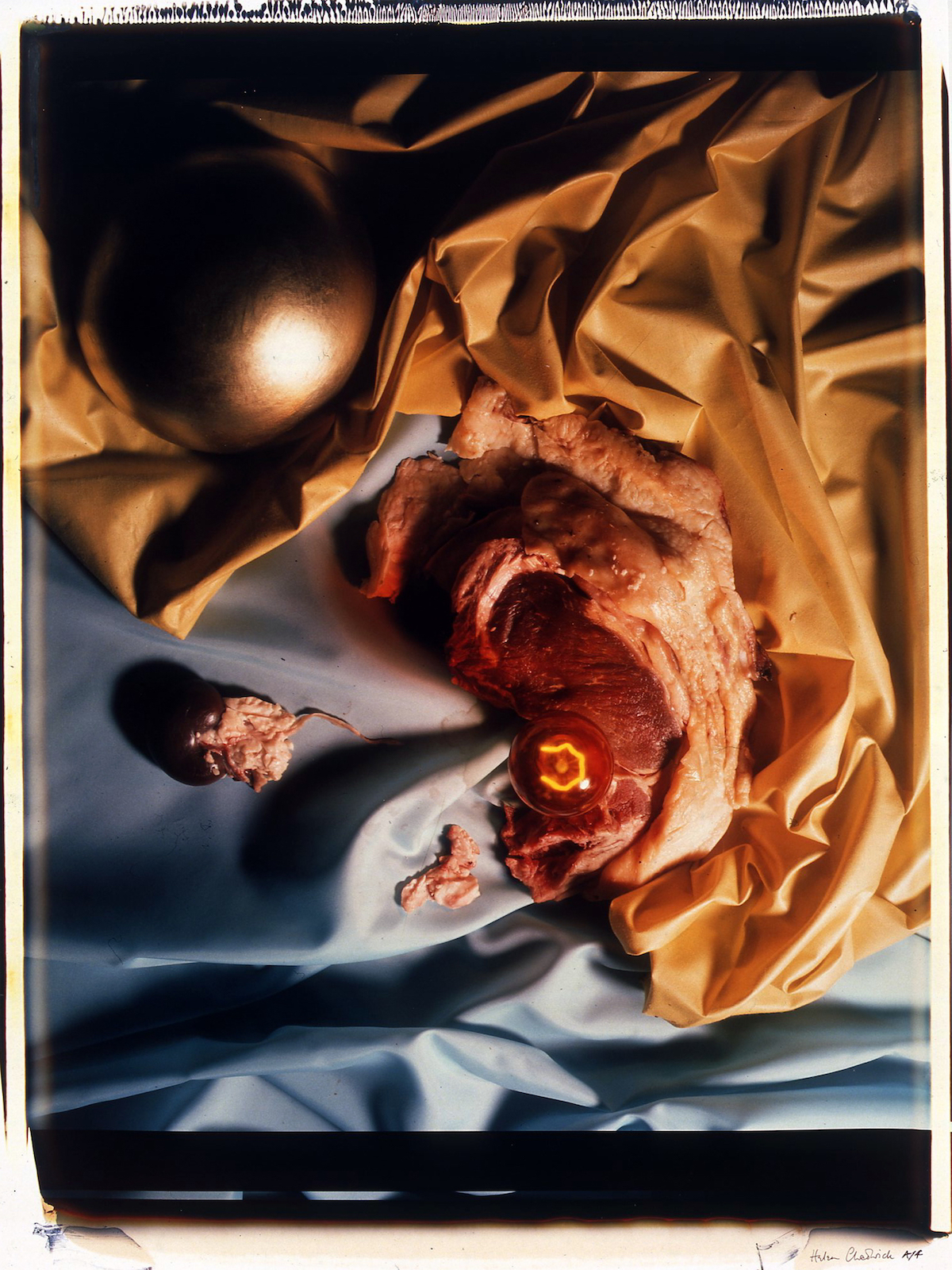
“They substitute straightforward presentations of the female body for objects, flowers and food”
Curated by Philomena Epps, the show is now up in physical form at Edinburgh, Scotland’s Arusha Gallery. Agnieszka Prendota, creative director of Arusha, describes the work on show as formative in personal and art historical ways, through its encouraging women to “negotiate their place in society and within our bodies.” The exhibition was previously shown in an online iteration during lockdown by Richard Saltoun Gallery in Mayfair, London.
The feminism explored in the exhibition arises from its wryly humorous, almost satirical standpoints, which act as counter-narratives to the potentially crude, base male gaze. This is hinted at in the show title: Bodily Objects suggests something almost pathological and distanced. There’s no sensuality in those two words, just statement of fact.

Alexis Hunter, The Model’s Revenge, printed 2010. Copyright The Artist. Courtesy of Richard Saltoun Gallery
This aim of parodying the male gaze in order to subvert it is most evident in the work of Rose English, which uses the pageantry of dressage as a metaphor for the fetishisation of women’s bodies. In her 1974 photograph, titled Rose and Athene, naked bums are adorned with two little porcelain horse statuettes in a sort-of-sexy, sort-of-silly exploration of the strange ways in which women’s bodies become sites of spectacle and objectification. Documentation of English’s 1975 performance piece, shown at that year’s Southampton Horse Show Quadrille, is also on show, in which she dressed six female performers in revealing outfits comprised of leather harnesses, horsehair tails and raised shoes made of hooves.
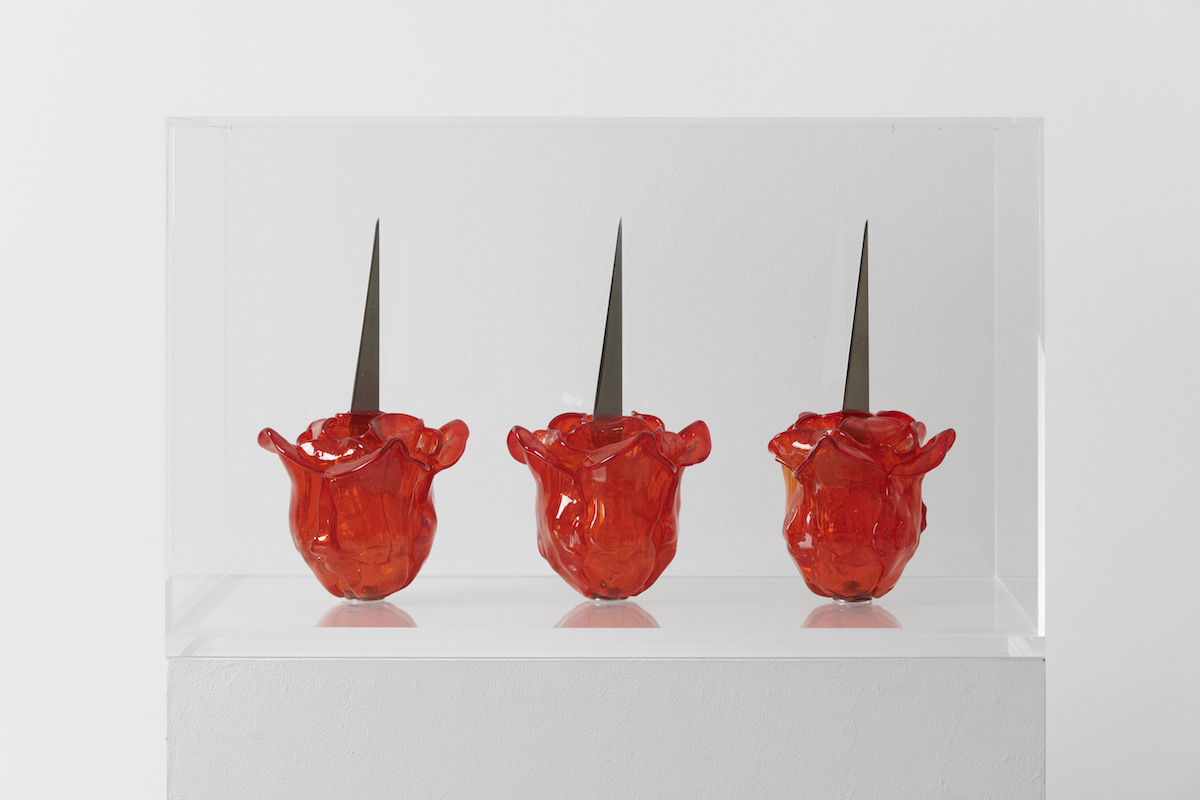
It’s not horses but rubber teats and condoms that become proxy for the female form in Renate Bertlmann’s work. These become various erogenous zones, and delineate the fine lines between eroticism and the abhorrent; destruction and beauty. Destruction and death, too, are central to the work of Helen Chadwick. Her images are potent and frequently play with the sensation of disgust: offal is repositioned as still life, with the chiaroscuro and rich red palettes of a historical museum piece. Flesh becomes just that: flesh; not something to be lusted over but a genderless, decaying object.
“Bodily Objects suggests something almost pathological and distanced. There’s no sensuality in those two words, just statement of fact”
There’s little in the way of disgust in Carolee Schneemann’s work, which is famous for its inquisition into gender and sexuality. Women’s bodies in her work are highly sensual, and a defiantly personal celebration of the women’s liberation movements of the 1970s. Schneemann’s 1972 series Ice Naked Skating is on show here, created when the artist was in London and feeling homesick for New York’s wintery celebrations.
The feminism presented by these various artists might seem at odds with contemporary politics, but they retain a prescient celebration of the female body and its capacity for empowerment. Together, they address the complexities and nuances of what makes “feminist” art, and overturning gendered ideas within wider society in entirely new ways.
- Rose English, Quadrile, 1973/2013. Copyright the artist (right); Helen Almeida, Pintura Habitada [Inhabited Painting], 1976/2015. Copyright The Artist (left). Borth courtesy of Richard Saltoun Gallery
Bodily Objects
On show at Richard Saltoun Gallery, London, and Arusha Gallery, Edinburgh until 31 August
VISIT WEBSITE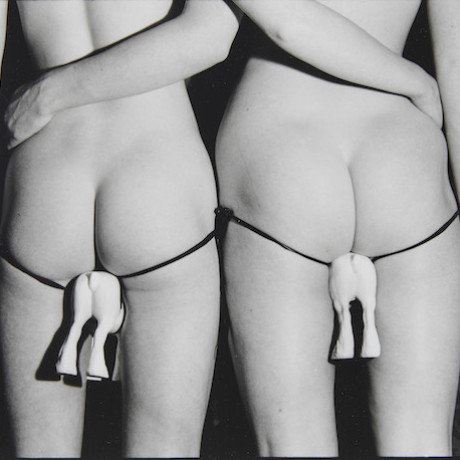


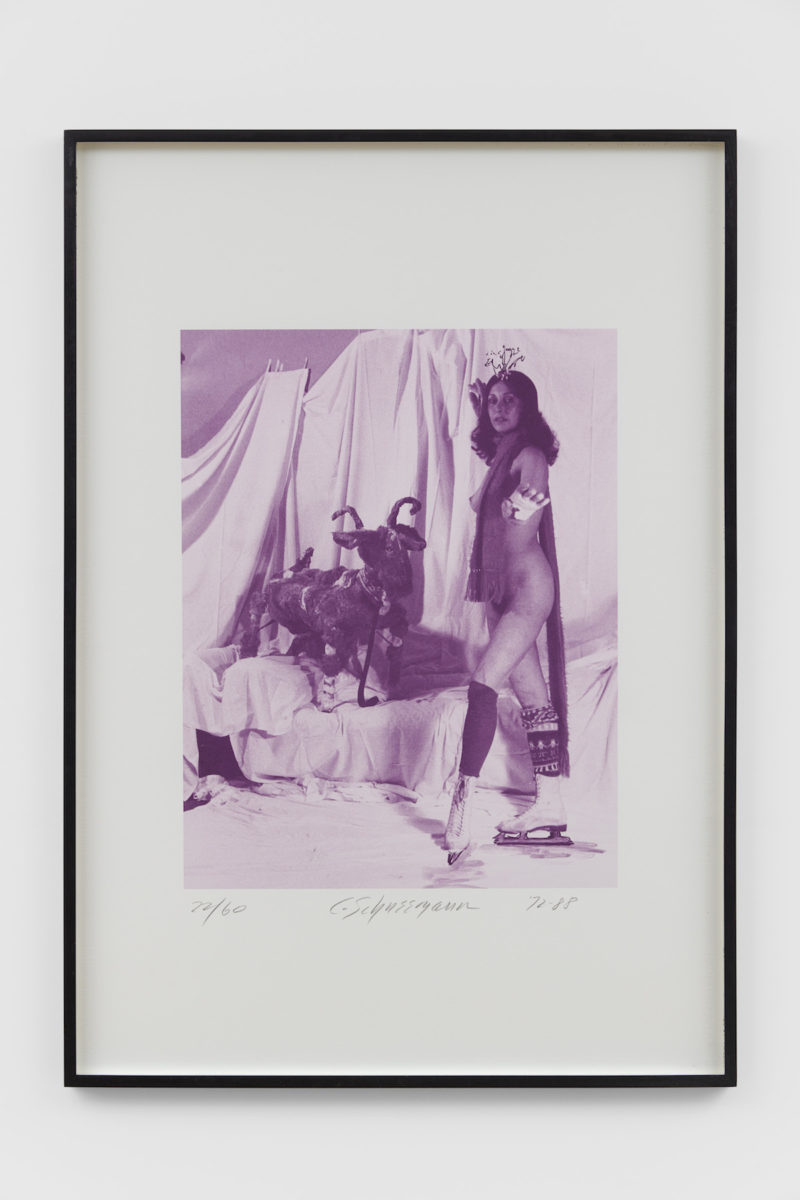
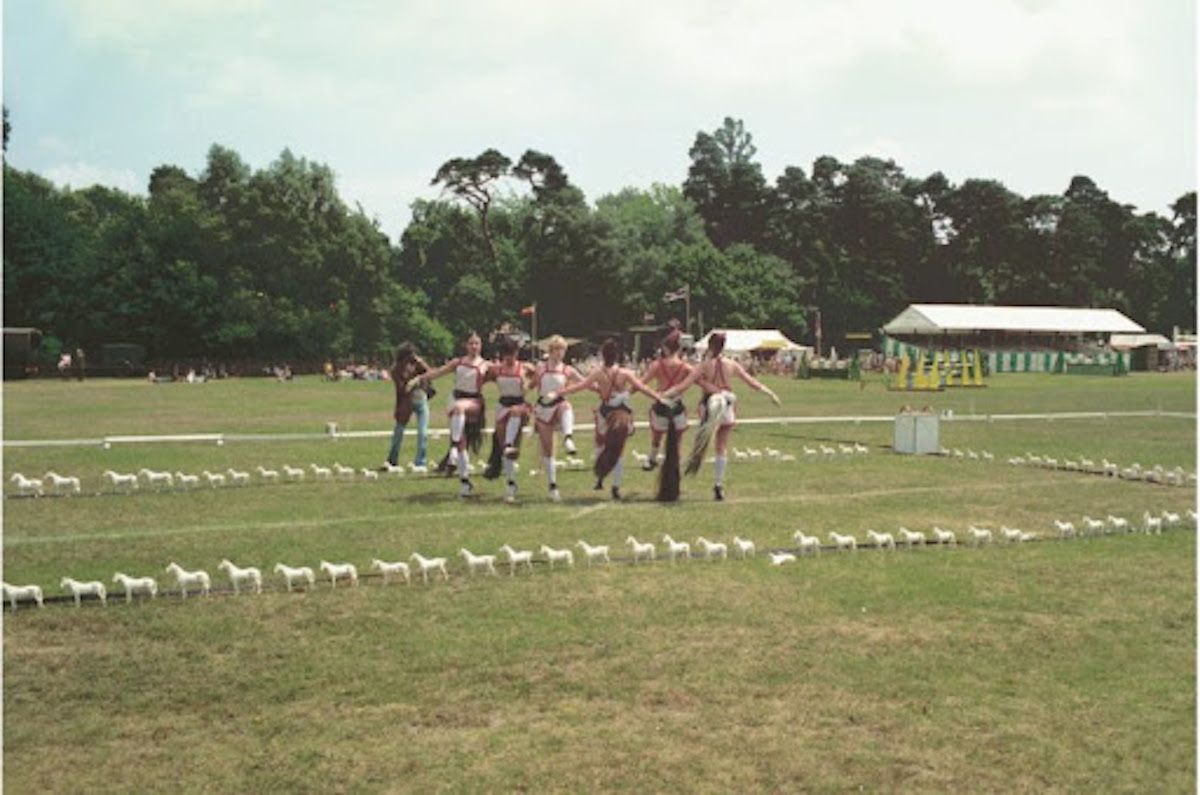
![Helen Almeida, Pintura Habitada [Inhabited Painting], 1976_2015](https://elephant.art/wp-content/uploads/2020/07/Helen-Almeida-Pintura-Habitada-Inhabited-Painting-1976_2015.jpg)





